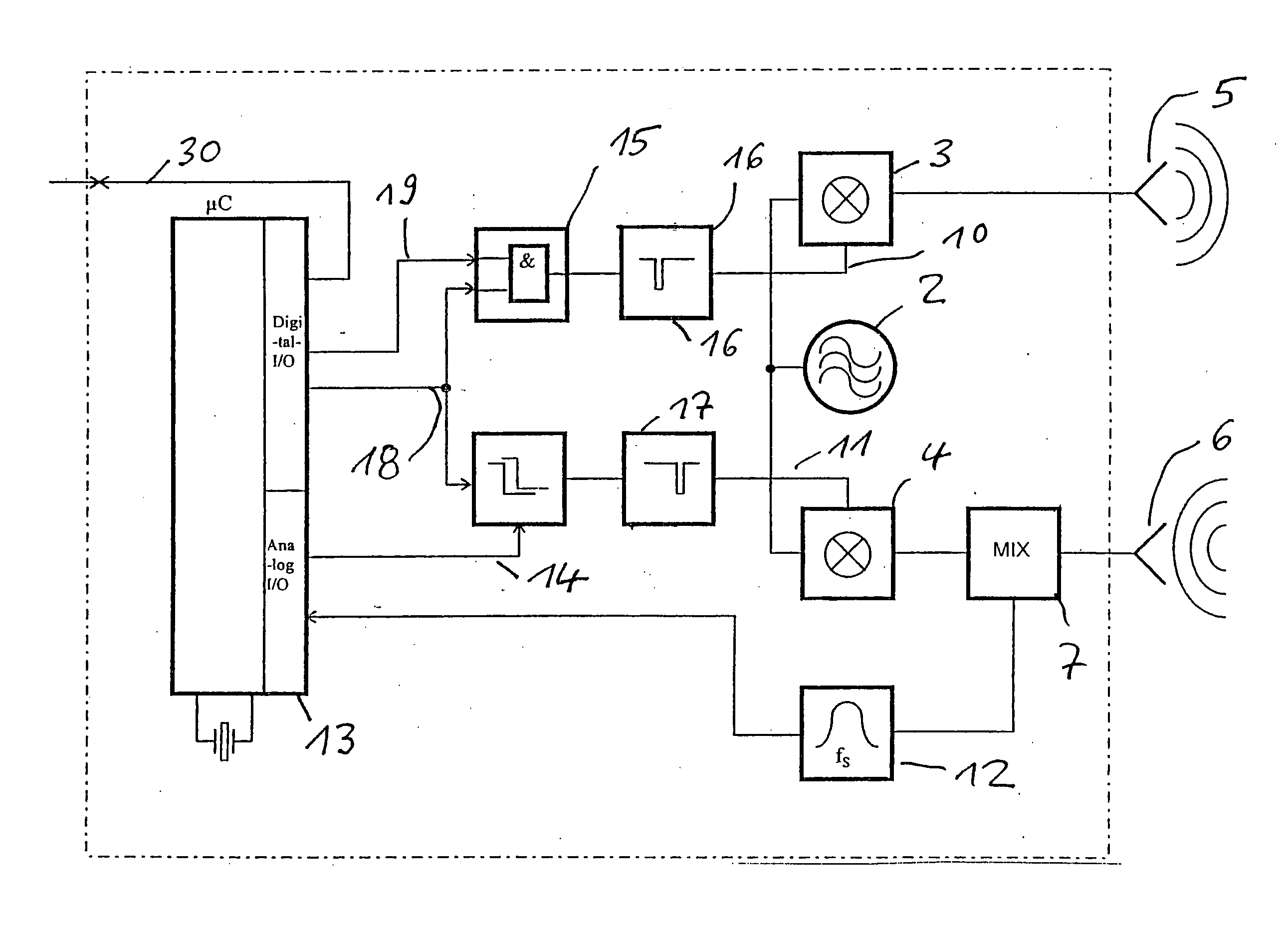Pulse radar method, pulse radar sensor and corresponding system
a pulse radar and pulse radar technology, applied in the field of pulse radar, can solve the problems of substantial interference immunity within the system, high bandwidth of srr radar pulses,
- Summary
- Abstract
- Description
- Claims
- Application Information
AI Technical Summary
Benefits of technology
Problems solved by technology
Method used
Image
Examples
Embodiment Construction
[0027] As shown in FIG. 1, a microwave-carrier oscillator 2 in radar sensor 1 generates a carrier frequency. With the aid of trigger-pulse-controlled fast switches 3 and 4, in particular diode switches, oscillation packets are formed from the continuous signal of carrier oscillator 2. Via an antenna 5, the oscillation packet formed via switch 3 is emitted. After reflection at a possible obstacle, parts of this signal are picked up by receiving antenna 6 and conveyed to a mixer 7. This mixer 7 mixes the oscillation packet formed via switch 4 with the incoming signal. Mixer 7 provides an output signal 8 if the received and the sampling signal (via switch 4) coincide in time. With the aid of a controllable pulse delay 9, the sampling pulse is delayed with respect to the transmission pulse, due to the fact that trigger pulse 11 for switch 4 is conveyed via pulse delay 9, whereas trigger pulse 10 reaches switch 3 without a delay. The control of pulse delay 9 is implemented by a control v...
PUM
 Login to View More
Login to View More Abstract
Description
Claims
Application Information
 Login to View More
Login to View More - R&D
- Intellectual Property
- Life Sciences
- Materials
- Tech Scout
- Unparalleled Data Quality
- Higher Quality Content
- 60% Fewer Hallucinations
Browse by: Latest US Patents, China's latest patents, Technical Efficacy Thesaurus, Application Domain, Technology Topic, Popular Technical Reports.
© 2025 PatSnap. All rights reserved.Legal|Privacy policy|Modern Slavery Act Transparency Statement|Sitemap|About US| Contact US: help@patsnap.com



